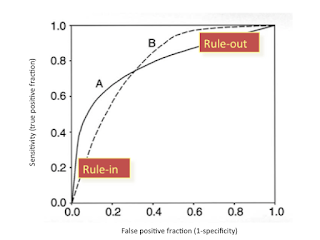A Machine Learning Approach to Live Migration Modeling
Authors:
Changyeon Jo, Youngsu Cho, Bernhard Egger
Seoul National University
Summary:
This paper proposed a machine learning approach to predict the system metrics for different VM migration algorithms. These system metrics are affected by migration algorithm, host machine status and user applications and feasible for machine learning approach. The prediction model takes 21 system/application input features (including which algorithm), and generates 6 metrics as the output. As a result, it can accurately estimate each metrics under different application, VM and algorithms. One of the application, the paper provide a semi-automated algorithm selection based on this machine learning model and user-provided SLA (service level agreements) constraints.
Questions about Machine Learning:
Why machine learning is applied:
The combination of algorithm, VM status and current running applications status, is a huge searching space.
Machine learning features:
which algorithm, 20 features to describe: user applications (CPU, memory, networking usage), source and destination VM utility and etc.
Machine learning outputs:
6 features prediction results: migration time, transferred data, downtime, performance degradation, CPU and Memory utilization.
Machine learning application:
semi-automated migration algorithm selection
Strength:
1. This paper is very clear for the readers: why they use machine learning to solve this problem and how. It also has a very good writing structure.
2. It shows lots of data to demonstrate the effectiveness, coverage and generality of this approach.
Limitation:
1. The motivation should be evaluated, i.e. applying incorrect algorithms on applications leads to observable overhead.
2. CPU degradation is close to 0 (section 7.2, bottom of page 8), then what's the motivation to predict that?
3. (Minor) Nearly all the features are timing serials. The paper needs to describe how to process this timing serial sampling data into features in this machine learning framework (in profiling stage).
Blogger Minjun Wu, 04/10/2019
Changyeon Jo, Youngsu Cho, Bernhard Egger
Seoul National University
Summary:
This paper proposed a machine learning approach to predict the system metrics for different VM migration algorithms. These system metrics are affected by migration algorithm, host machine status and user applications and feasible for machine learning approach. The prediction model takes 21 system/application input features (including which algorithm), and generates 6 metrics as the output. As a result, it can accurately estimate each metrics under different application, VM and algorithms. One of the application, the paper provide a semi-automated algorithm selection based on this machine learning model and user-provided SLA (service level agreements) constraints.
Questions about Machine Learning:
Why machine learning is applied:
The combination of algorithm, VM status and current running applications status, is a huge searching space.
Machine learning features:
which algorithm, 20 features to describe: user applications (CPU, memory, networking usage), source and destination VM utility and etc.
Machine learning outputs:
6 features prediction results: migration time, transferred data, downtime, performance degradation, CPU and Memory utilization.
Machine learning application:
semi-automated migration algorithm selection
Strength:
1. This paper is very clear for the readers: why they use machine learning to solve this problem and how. It also has a very good writing structure.
2. It shows lots of data to demonstrate the effectiveness, coverage and generality of this approach.
Limitation:
1. The motivation should be evaluated, i.e. applying incorrect algorithms on applications leads to observable overhead.
2. CPU degradation is close to 0 (section 7.2, bottom of page 8), then what's the motivation to predict that?
3. (Minor) Nearly all the features are timing serials. The paper needs to describe how to process this timing serial sampling data into features in this machine learning framework (in profiling stage).
Blogger Minjun Wu, 04/10/2019

I am sorry.. My first opinion about the limitation is shown in Figure 2. To be honest, I cannot find very obvious and fundamental problem in this paper...
ReplyDeleteThey have limitation 1. just not at the beginning of the paper. A question might be the sampling rate (1 out of 32) and whether this can be adapted or whether greater sampling can improve things.
ReplyDeleteRight. For example, for working set entropy, I have 400 samples in this application data, how to convert this 400 to 1 single number feeding into the model. I think not all the features can be calculated by "average" operation..
Delete